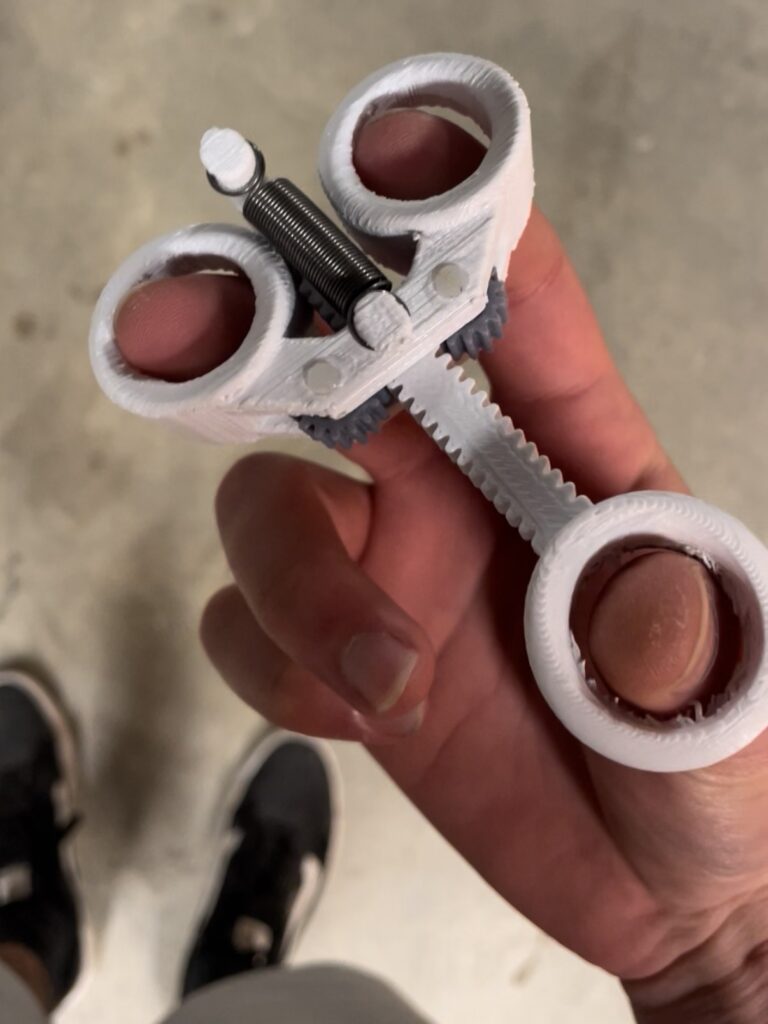Roy Steinberg explains how his quest to improve his concentration in college led to the invention of the Pinchy quiet fidget toy.
Engineering is fundamentally about building things to solve problems. The challenge lies in figuring out how to turn the solution in your mind into a real thing. Even going from an idea to a sketch can be difficult if you have trouble articulating what you’re trying to achieve, and that’s only the first step along a journey that can last for years, or even lifetimes.
It’s a journey that Roy Steinberg knows well. “I’ve always been spatially aware,” he tells me. “I can visualize things in my head and I want to bring them out. For me, CAD is the best way to do that. It’s how I got into engineering in high school, when I started CAD modeling with Autodesk Inventor and enjoyed it so much that I’d spend my lunch periods working on projects.”
Steinberg went on to major in mechanical engineering at the University of Illinois, where he continued to develop his skills in 3D modeling and also discovered an interest in 3D printing. Together, these helped him overcome a personal challenge in his education. “I have ADHD [Attention Deficit Hyperactivity Disorder] and I used toys during lectures,” he says, “but most fidget toys were distracting and didn’t actually help me focus. So, I decided to engineer my own.”
That decision led Steinberg on a journey familiar to many engineers: taking a product concept to design to production, including dozens of iterations along the way. The result, after a little less than a year, was the Pinchy — a silent, pinching fidget toy that’s deceptively simple in its design.
Designing the Pinchy
The fidget toy consists of just three main parts: a thumb pad, a column, and a finger carriage. Nevertheless, getting those three parts to work together in the way Steinberg envisioned them took time.
“I’d make small adjustments to the width of the bearing slot, the seating of the spring, or the spacing of the holes,” he explains. “Honestly, all that iterating and rapid prototyping was one of the most fun parts.”
During our call, Steinberg walks me through several of his prototype designs via screen share, including ones that used gears instead of bearings, or tension versus compression springs. As is often the case, some of those iterations ended up informing later designs, even though they didn’t make it into the original final product. The Pinchy Click, for example, uses gears similar to those in some of the earlier designs.

Although Steinberg is the sole inventor of the Pinchy, he’s quick to acknowledge the help he received from other engineers, including one of his professors, Michael Philpott. “He taught Introduction to Engineering Design,” Steinberg recalls. “He was amazing, and an inventor, too: he created the Salad Shooter. I’ve asked him for design help with the Pinchy and advice on patents.”
After many long hours and almost as many design iterations, Steinberg finally realized his original vision. “There were times I thought it wouldn’t work and felt like quitting,” he says, “But I pushed through, focusing on making the best possible fidget toy, first and foremost for myself, since I wanted something quiet to use in class.”
The product launch
By his junior year, Steinberg was ready to bring the Pinchy to market via the e-commerce website, Etsy. “I learned a lot about the logistics — printing labels, shipping, accounting — mostly from YouTube,” he says. “I launched right before the holidays, which helped, and I started getting orders every day.” By his senior year, Steinberg had begun using TikTok Shop, which he says helped turn the Pinchy into a solid side hustle. Even now that he’s finished school and started a full-time job at Northrop Grumman, he’s still shipping orders daily.
“I work on infrared countermeasure hardware, which is essentially missile defense systems for military aircraft,” he explains. “It feels meaningful to work on something that protects people. Balancing that with running a small business is hard, but I enjoy both.”
Beyond being an additional stream of income, the Pinchy is also continuing to help Steinberg focus at work. “I’ll fidget with it in my left hand while using my mouse in my right.” He also gave them away as gifts to his coworkers during his internship.
Engineering & ADHD
The overlap between engineers and people with ADHD is large enough that the relationship between engineering and having ADHD has become a subject of scholarly interest. Papers on this topic appear in the American Society for Engineering Education, the International Journal for Talent Development and Creativity, and the Journal of Engineering Education.
In each case, it’s noted that individuals with ADHD tend to excel in creativity and a willingness to take risks, both potentially useful traits for engineers. While most research still focuses on the struggles of teaching engineering to those with ADHD, more recent efforts — including the examples cited above — emphasize the unique strengths ADHD can offer to engineering.
Asked about the relationship between being an engineer and having ADHD, Steinberg’s response is very much in line with this duality. “It can be tough,” he admits. “Focusing, staying organized, blanking out mid-conversation, but I also think of it as kind of a superpower. People with ADHD often make connections quickly and that helps them come up with ideas fast and think in unique ways. I take medication to help manage it, but I still value the creativity and fast thinking it gives me.”
That creativity and drive come across when I ask Steinberg what he’d do with unlimited time and resources to apply his engineering skills. The projects that immediately spring to mind are ambitious and meaningful: reducing carbon dioxide levels through improved filtration and carbon capture systems, or building better high-speed rail infrastructure, especially in his hometown of Chicago. “I love trains,” he says, “and I’d love to see rail systems modeled on the European ones here.”
Neurodiversity in engineering
Being a good engineer requires a certain kind of mindset: a natural inclination to see the world in terms of problems to be solved and an innate drive to make those solutions a reality by building them. That means a good engineer needs to be creative, willing to take risks and capable of intense focus, all qualities that are also frequently found in individuals with ADHD. Of course, that doesn’t mean that good engineers are more likely to have ADHD or vice versa, but it does suggest, as in the neurodiversity paradigm more generally, that difference and disability are not the same thing.
Engineers are often skeptical, but they also tend to be optimistic when it comes to their work and the difference it can make to the wider world. Whether he’s designing a fidget toy or a missile defense system, Roy Steinberg personifies these values and that’s reflected in his advice for other young engineers: “Don’t be bound by what others say. Anything is possible and if someone criticizes your idea, take it as constructive feedback, not a reason to give up. There’s always room to innovate, and you can always make something better. Of course, at some point,” he chuckles, “you do need to stop and release it.”



